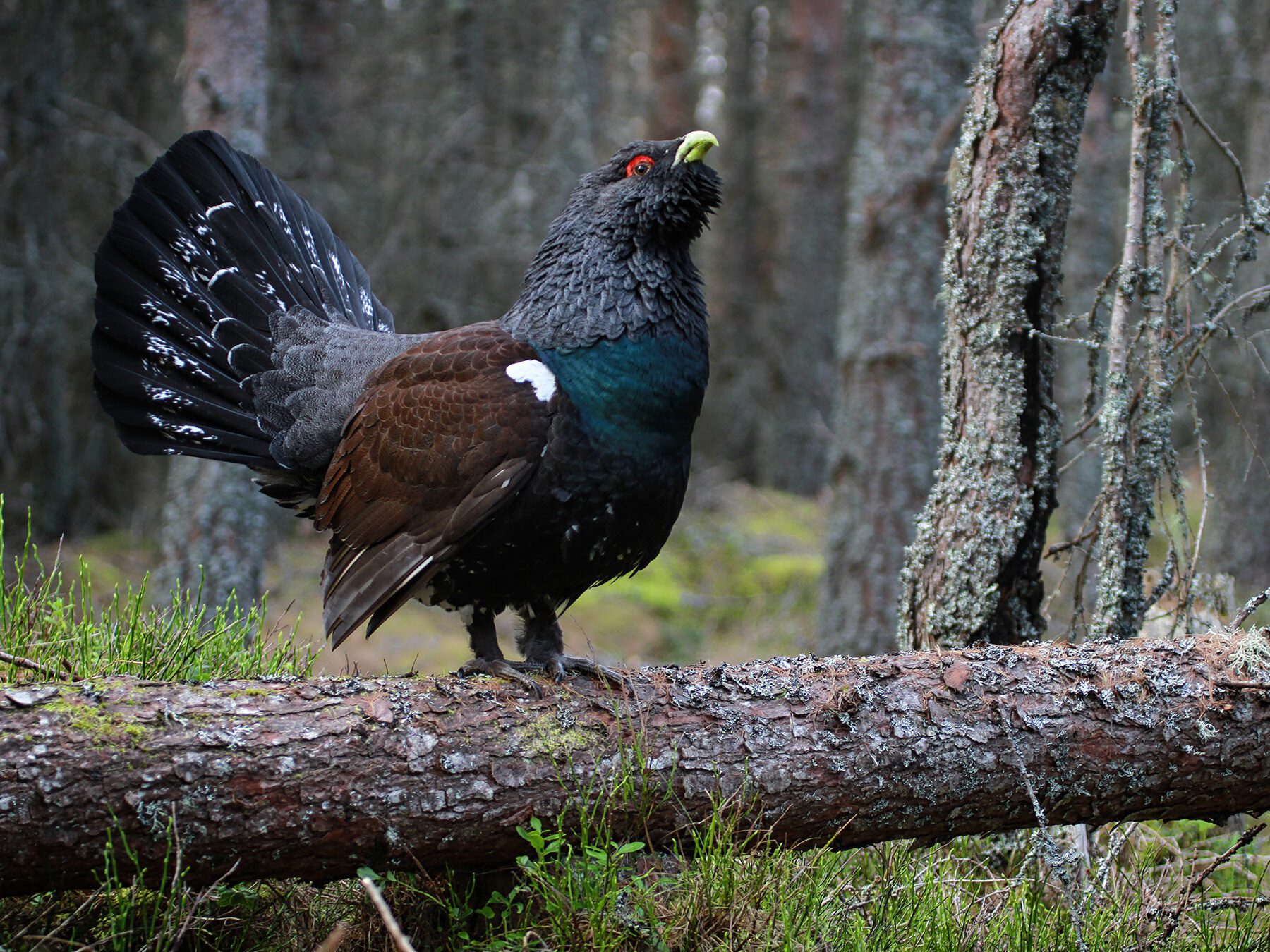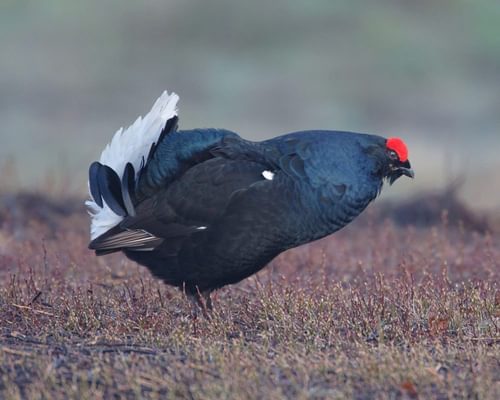Western Capercaillie
Least ConcernTetrao urogallus
Visual Identification

Western Capercaillie
Appearance
The Western Capercaillie is a large, ground-dwelling grouse with striking sexual dimorphism. Males are predominantly black with a glossy blue-green sheen on the chest, a distinctive red eyebrow, and a large, fan-shaped tail. On the chin and throat area, spiky black feathers give the appearance of a beard.
Females are significantly smaller and sport mottled brown plumage with barring, providing excellent camouflage. Both sexes have feathered legs and feet, an adaptation to their cold habitat, and short, thick, hooked bills.
Size
Length
60cm to 87cm
Wingspan
87cm to 125cm
Weight
1.5kg to 6.5kg
Habitat and Distribution
Habitats
Woodland
Garden
Wetland
Coastal
Urban
Farmland
Grassland
Desert
Tundra
Rainforest
Mountain
Savanna
Distribution
Western Capercaillies inhabit boreal and montane coniferous forests across Eurasia, from Scotland and Scandinavia to eastern Siberia. They prefer mature forests with a diverse understory and open areas for lekking.
In the UK, they are now restricted to the Scottish Highlands, where reintroduction efforts have had limited success. Their range has contracted significantly due to habitat loss and fragmentation.
Elevation Range
Up to 2,000 meters
Climate zones
Temperate, Subarctic
Distribution Map
Distribution by Region
Behaviour and Ecology
Bird Attributes
Hover over the icon next to each attribute for more information.
Tap the icon next to each attribute for more information.
Diet
Western Capercaillies have a varied diet that changes seasonally. In winter, they primarily feed on conifer needles, especially pine. During spring and summer, they consume leaves, buds, berries, and insects.
Their specialised digestive system allows them to process tough plant material efficiently.
Behaviour
Western Capercaillies are known for their elaborate courtship displays. Males perform a complex ritual on traditional leks, fanning their tails and making distinctive clicking and popping sounds.
They are generally solitary outside the breeding season, foraging on the ground and roosting in trees at night.
Vocalisation
Male Western Capercaillies produce a series of distinctive sounds during their courtship display. This includes a loud 'pop' or 'cork' sound, followed by a scraping noise often described as 'crushing gravel'. Females make soft clucking calls. Both sexes may produce alarm calls when disturbed.
Nesting & Breeding
The breeding season for Western Capercaillies begins in late March to early April. Males gather at traditional lekking sites to perform elaborate courtship displays, competing for female attention.
Females construct simple ground nests in dense vegetation, often at the base of a tree. They typically lay 6-8 pale yellow or buff-coloured eggs with brown spots. The nest is a shallow scrape lined with plant material and feathers.
Incubation lasts about 26-29 days, carried out solely by the female. Chicks are precocial and can leave the nest shortly after hatching, staying with the hen for several months.
Lifespan
The Western Capercaillie typically lives for 6 years, with a maximum recorded lifespan of 18 years.
Like all birds, lifespan can be affected by factors including predation, habitat quality, disease, and access to food sources.
Conservation and Status
Global Conservation Status
While globally listed as Least Concern, Western Capercaillies face regional declines due to habitat loss and fragmentation.
In the UK, they are critically endangered, with conservation efforts focused on habitat management and predator control in Scotland.
Birdwatching Tips
- Look for Western Capercaillies in mature coniferous forests, especially those with a mix of pine and spruce.
- Listen for the distinctive 'cork-popping' sound of males during the spring breeding season.
- Be patient and quiet; these birds are shy and easily disturbed.
- In the UK, focus on the Scottish Highlands, where small populations persist.
Additional Information
Quick Facts
Other names:
Wood Grouse, Capercaillie
Family:
PhasianidaePredators
Did You Know?
- The Western Capercaillie is the largest member of the grouse family.
- Males can weigh up to four times more than females, one of the most extreme size differences in birds.
- Their scientific name, Tetrao urogallus, means 'tail-cock' in Greek, referring to their impressive tail display.
Was this bird profile helpful?
Your feedback helps us improve our content
Community Experience
Community Ratings
No ratings yet - be the first to rate this bird!
Latest Community Reviews
No reviews yet
Sign in to be the first to review
Similar Birds
References
- 2 3
website: BirdLife International. 2016. Tetrao urogallus. The IUCN Red List of Threatened Species 2016: e.T22679487A85942729.
View source - 4
report, 2002: Madge and McGowan
- 1
website, 2000: Carey and Judge, Longevity Records: Life Spans of Mammals, Birds, Amphibians, Reptiles, and Fish
View source







